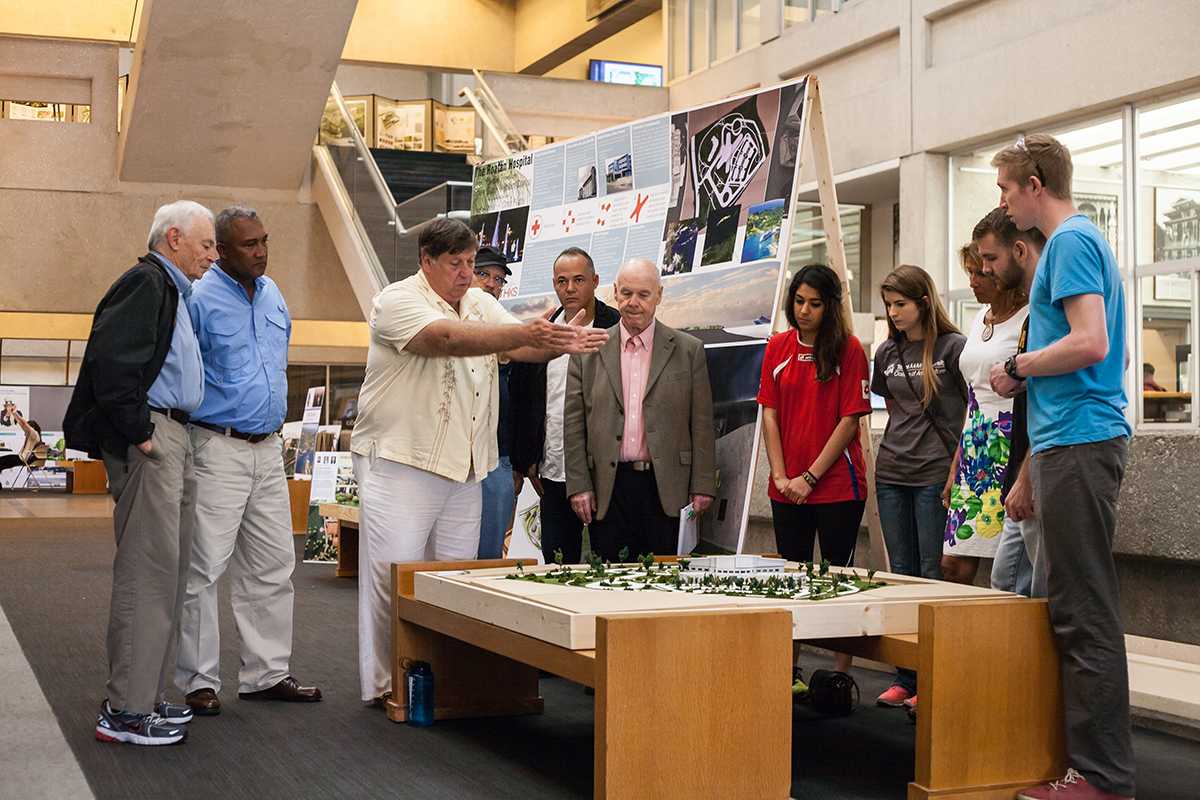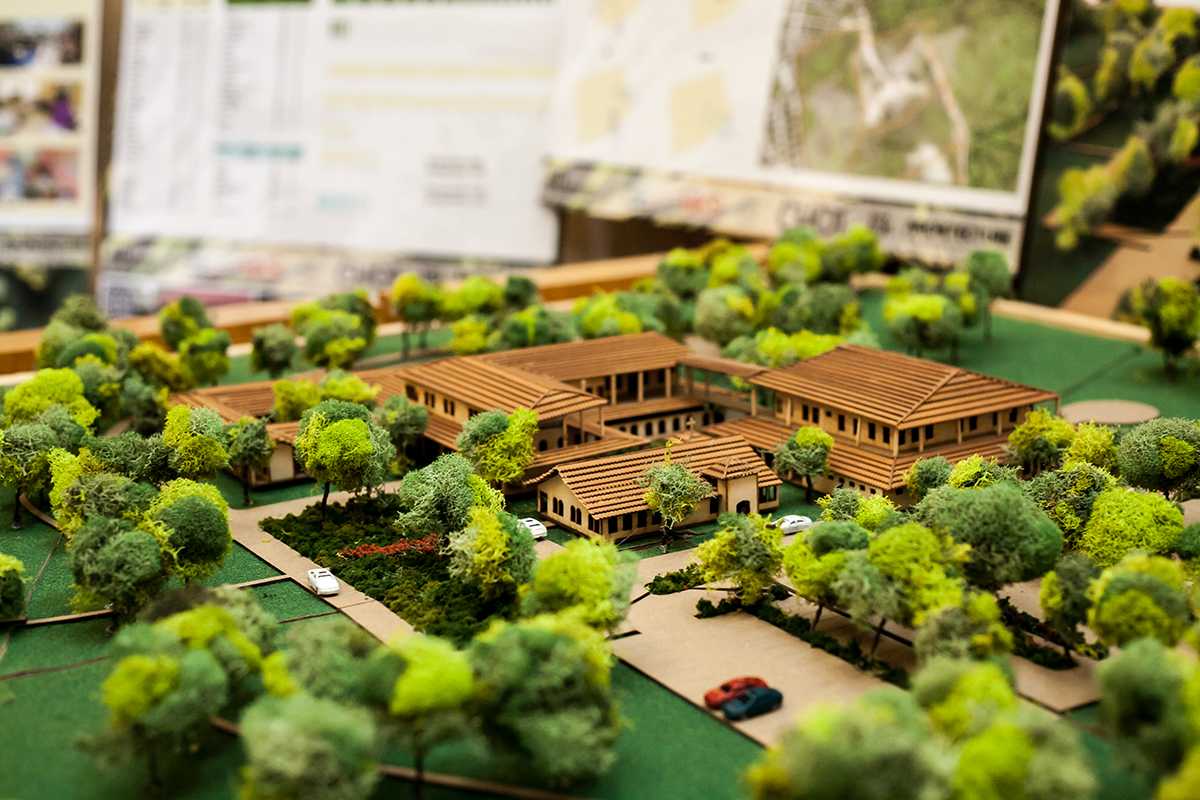Senior environmental design students will show as many as seven different design proposals for a new public hospital in Roatán, the largest of Honduras’ Bay Islands.
Representatives from the Honduran government and potential donors will meet Friday at the George Bush Presidential Library and Museum for a public design review.
The students’ hospital design aims to serve approximately 100,000 island residents and to significantly improve upon an existing facility that was originally built in the 1990s for a population of under 30,000. Twenty-seven students led by George Mann, professor of architecture, and Zhipeng Lu, architecture lecturer, worked on the designs for the new medical facility.
“It was pure coincidence,” said Mann on how the design and the international interest shown toward it came to be. “We do a lecture series every Friday at the Architecture-for-Health studio and our theme was Latin American and Caribbean architecture on one of the days. I wanted my students to do a studio project that was ‘real.’ Luckily Dr. Howard Gruber, who had served in Roatán in the past, and who also happens to be my fraternity brother, approached me with this proposal during the same time.”
Students were introduced to the project in February during an interactive session with three physicians — Dr. Raymond Cherington, Dr. Patrick Connell and Dr. Howard Gruber, all of whom have extensive experience with providing healthcare to the island’s citizens. Connell said health care on the island faces several challenges not typically found in the U.S.
“Heat, humidity and rain are the main challenges involved in designing a healthcare facility in an Island like Roatán,” Connell said.
Global Healing, a nonprofit organization dedicated to improving access to high-quality health care in developing countries, provided funds to the A&M students to help them get started on design projects. Gruber, who previously served as the medical director of Global Healing, said the continuous feedback they provided played an important role in students meeting the required specifications.
“Students would send us plans at the end of each week and we — two doctors from Roatán and myself from California — would organize Skype meetings every Monday to evaluate their progress and provide feedback on their designs,” Gruber said .
Kayli Yentzen and Odette Leal, environmental design architecture seniors who presented at the unveiling, said they sent the physicians their latest plans to study them and provide valuable feedback on everything from the building’s aesthetics to its ventilation. Terracotta roofing was used to incorporate the Hispanic architecture of the surrounding area. The building is mostly concrete to lower the temperature, and a pathway to allow breezes in was designed to keep ventilating the building during the area’s frequent power outages.
“We placed emphasis on functionality since we are mostly doctors and want something safe and feasible,” Connell said. “Also we wanted a simplistic design because we can’t afford a high-tech hospital.”
Most of the student designs included local materials for construction, slanted roofs in their designs to deal with torrential rainfall and space for emergency generators.
Marcos Nelson, a municipal councilman from Roatán, who was also present at the unveiling thanked Gruber for his help with project and expects to hit the ground running after consultation with the health, architecture and construction experts at the public showcasing.
“We have the land for the new facility and are already in contact with contractors. We are really looking forward to evaluate student designs,” Nelson said.
George Mann is the holder of the Ronald L. Skaggs, FAIA & Joseph Sprague, FAIA Endowed Chair in Health Facilities Design.











